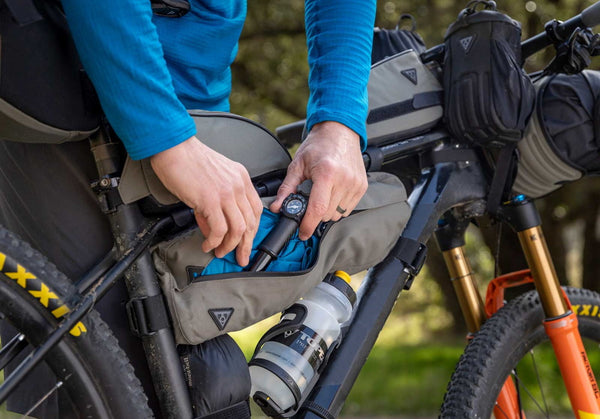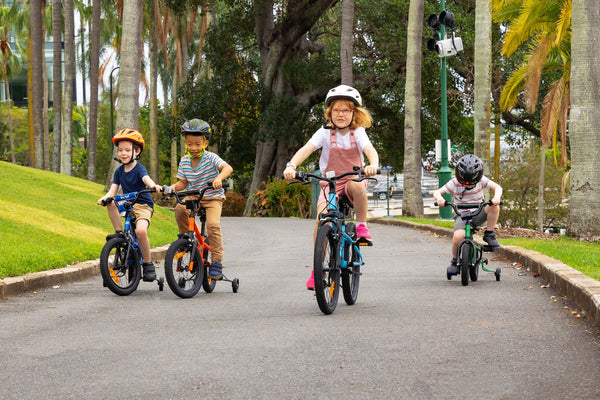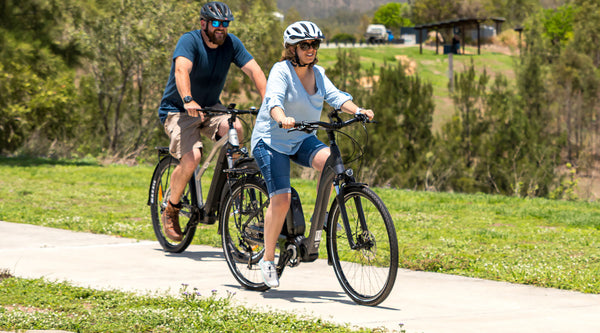Bikepacking has had a huge surge in popularity in recent years and New Zealand has quickly become one of the best bikepacking destinations in the world thanks to our mild climate and fantastic choice of trails. Kiwi’s also love adventure and exploring our beautiful country and one of the best ways to do that is by bike!
But, to make sure to keep the fun going during the trip there are some essential tips you need to know.
Choose your route
Anywhere in New Zealand you can find a trail not too far off the beaten path to start your bikepacking journey, if you are just starting out and getting your kit together trying a day trip adventure will help you decide how much gear, food and water you need and how many km’s you are happy doing in a day. One of the best free resources for bikepackers is the nzcycletrail.com website which lists rides around New Zealand from single day adventures to week long epics, they also list grade levels so that you can tailor your experience to a level you're comfortable with.
What is the difference between bikepacking and rail trail?
Rail trail riding is often a gateway for riders to start their journey into bikepacking, while rail trail rides can be half day to multi-day epics they often come with serviced overnight stopovers or shuttle services to get you back from where you left off. Bikepacking is a much more down to earth approach, similar to hiking you’ll need to carry everything you need along the way from cooking utensils and food, to sleeping gear and tents, adequate clothing and even navigation equipment.
Choosing the Bike
The Adventure Road & Gravel Bike 
Thanks to the popularity of bikepacking, there are bikes these days designed specifically for the needs of bikepackers. Gravel and Adventure Road bikes are similar in design to road bikes, with the same dropbar handlebars and shifters made for putting in long distances, but with custom tuned geometry for comfort on a bumpier ride, as well as slightly wider, grippier tyres and accessory mounting points ready to be kitted out to carry everything you need. These are perfect for riders who are already experienced with road biking and want a smooth transition into something more capable of adventuring off the beaten track. One of the biggest bonuses of these bikes is that they are very lightweight and efficient, perfect for putting in long distances on a mix of road and gravel.
View all Adventure Road & Gravel Bikes
The Hardtail Mountain Bike
If you’re looking for something a bit more versatile that can take you further into singletrack and are less focused on putting in long km’s on the clock then even a hardtail mountain bike can be kitted out for bikepacking for a comfortable ride, just keep in mind that these bikes will be heavier due to their burlier design and front suspension for the rigors of trail riding. So choosing a hardtail mountain bike as your bikepacking rig will be less efficient than a gravel bike, sacrificing a bit of weight saving for the option to shrug the gear off and hit the singletrack if the mood hits. There are already tailor made hardtail mountain bikes for bikepackers to avoid needing extra kit-out changes, such as the Marin Pine Mountain which is custom tuned for bikepacking adventures, with extra accessory mounts and custom components for bikepackers while still being a grass roots hardtail mountain bike for afternoon trail sessions.
The Electric Bike

For riders with less gas in the tank an electric bike is a game changer, with the extra pedal power you can enjoy the freedom of riding and exploring with minimal effort. Trekking, hybrid and electric mountain bikes are perfect for bikepackers, they sometimes already come fitted out with lights, mudguards and rear carrier racks for mounting your gear, just keep in mind if you’re going on multi-day adventures you will need to plan your accommodation around your bikes battery capacity or carry an extra battery on board. Electric bikes tailored for city and commuting with smaller batteries are not recommended. Making sure you have an overnight stopover in a serviced accommodation with electricity available to charge your battery overnight is a must do to avoid getting stuck out with a flat battery.
Choosing your gear

Getting your gear right is an essential part of whether you have a great time or a hard time. It’s important to plan ahead with a well thought out gear list, deciding how long you’ll be traveling for and what time of year you’ll be traveling will determine what kind of gear and how much you need to take.
A list of important questions to ask yourself are:
-
How will you carry your gear?
Panniers mounted on the side of carrier racks for heavier gear, frame bags and handlebar bags add extra out of the way storage space and are great for gear you need to reach quickly. Make sure to choose waterproof or water resistant materials, or pack your gear in a waterproof sack before popping into your bag. Backpacks can also add additional storage but keep in mind a heavy pack can become uncomfortable after a while, a smaller hydration pack is a good option if needed and will allow you to keep hydrated along the way without too much additional weight. -
Where will you be sleeping?
You’ll thank yourself later if you choose a small lightweight tent for overnight stays. Inflatable pillows and sleeping pads are perfect for a comfortable night sleep without extra bulk, while sleeping bags with down filling instead of synthetic will pack down smaller and lighter while offering warmer insulation in case it gets cold. -
What will you be eating?
Small high energy snacks and bars are perfect for keeping energy up during the day, while packing a cooker, pot and utensils for dinner and breakfast will provide a nutritious start and end of your day, hiking meals can be perfect as they are minimal weight and easy to prepare. Making sure to carry enough water is essential to keep hydrated and to cook food or hot drinks if needed, always consider if you will have access to water on your trip and if not carry more than you think you need. -
What will you be wearing?
New Zealand has changeable weather conditions so making sure to bring waterproof clothing for rain is a must to keep you warm and away from the elements. Wear comfortable riding gear and shoes designed specifically for riding. Baselayers and warmers are perfect for chilly morning starts and can be quickly removed if things heat up. Don’t forget the Sunglasses and Sunscreen either. Make sure to pack some comfortable shoes like jandals or crocs for around camp, as well a warm outfit for nighttime. Pack all clothing in waterproof dry bags to keep them away from the elements. -
What tools do you need?
You never know what might happen out there so make sure to keep a roadside repair kit with you. This kit should include a hand pump or co2 inflator, spare tube or tubeless repair kit, multi-tool, chain quick link and tyre levers. Having a basic understanding of bike repair is crucial, if you’re not confident on common fixes consider joining one of our free monthly maintenance classes for club members at your local store. -
What electronics do you need?
The basic kit you’ll want to take with you is good quality bike lights and a smartphone, some riders also like to take headphones along as well. If you are going to be on the road for a few days without a place to charge your electronics, taking a power bank is essential for keeping your smartphone, lights, cycling computer or GPS charged. A personal locator beacon is not an essential, however if you're traveling alone this can be a reassuring option to have if you happen to be caught out without phone reception. -
What do you need to keep safe?
A first aid kit is a must for any bikepacker, this doesn’t have to be a full feature kit if you want to save space, smaller kits are available with plasters, gauze, bandages, tape, pain relief and tweezers. A pocket knife or scissors can also be handy along the way.
How to get ready for your bikepacking trip
Now that you have your route planned, your bike chosen and your bags packed with all the gear you need. It’s time to hit the road right? Well, before you do, make sure to check your bike thoroughly, things like loose bolts and uneven brake pads can seem like a small problem when heading out, but can become big problems on a long trip with a heavy load of gear.
Follow this checklist to make sure your bike is as ready to roll as you are:
- Check both wheels, are the axles tight, is the wheel true and rolling smoothly between the brakes without rubbing
- Check your tyre pressure is correct
- Check all bolts are tight and there are no rattles in your headset
- Check gears are running smoothly without skipping or sticking
- Check brake levers are tight and pulling correctly, check pads are not worn or rubbing
- Check crank and pedals are tight
- Check the chain is not worn or rusty and is lubed for smooth operation
- Check your gear has not exceeded your bike and carriers weight limit
It’s important to perform these checks before, during and after any big trip to make sure your ride keeps running smoothly for adventures for years to come. If you’re not comfortable making these checks, or if you find one of these checks fail we recommend taking your bike to an experienced bike mechanic at your local bike shop.







